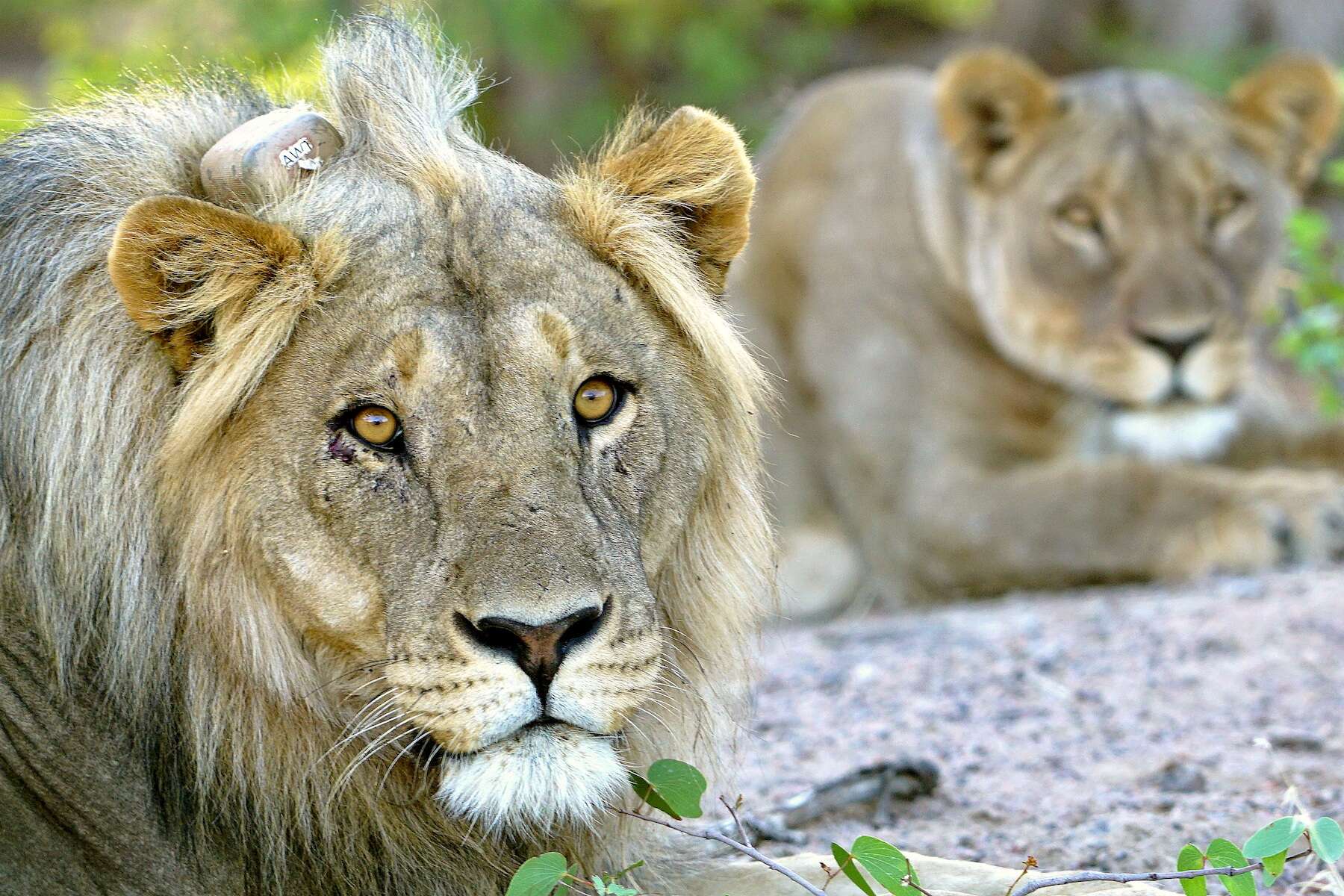
The Greater Etosha Carnivore Programme
Studying and conserving carnivores in a changing world
12th November 2023
12th November 2023
As human population growth continues, climate change accelerates and natural habitats shrink, carnivores and many other species are increasingly threatened. As a result, only 36% of terrestrial habitats host the same set of carnivore species today as they did in the past and some species have lost up to 93% of their historical range. Large carnivore species are often the first to be eradicated from an area because of the threat they pose to human livelihoods through the loss of livestock. Yet these species fill the important role of apex predators, which influence the behaviour and numbers of herbivores that in turn affect plant diversity and ecosystem health.
While protecting African carnivores is imperative for maintaining healthy ecosystems, these species can also generate economic benefits through tourism. Charismatic carnivores are flagship species for tourism, which contributed over N$3 trillion (US$150 billion) to Africa’s economy in 2022. Despite their economic and ecological significance, many African carnivores remain understudied, demonstrating a critical need for research addressing key questions to enhance our understanding of their ecology, population dynamics and human-carnivore interactions to implement science-based management.
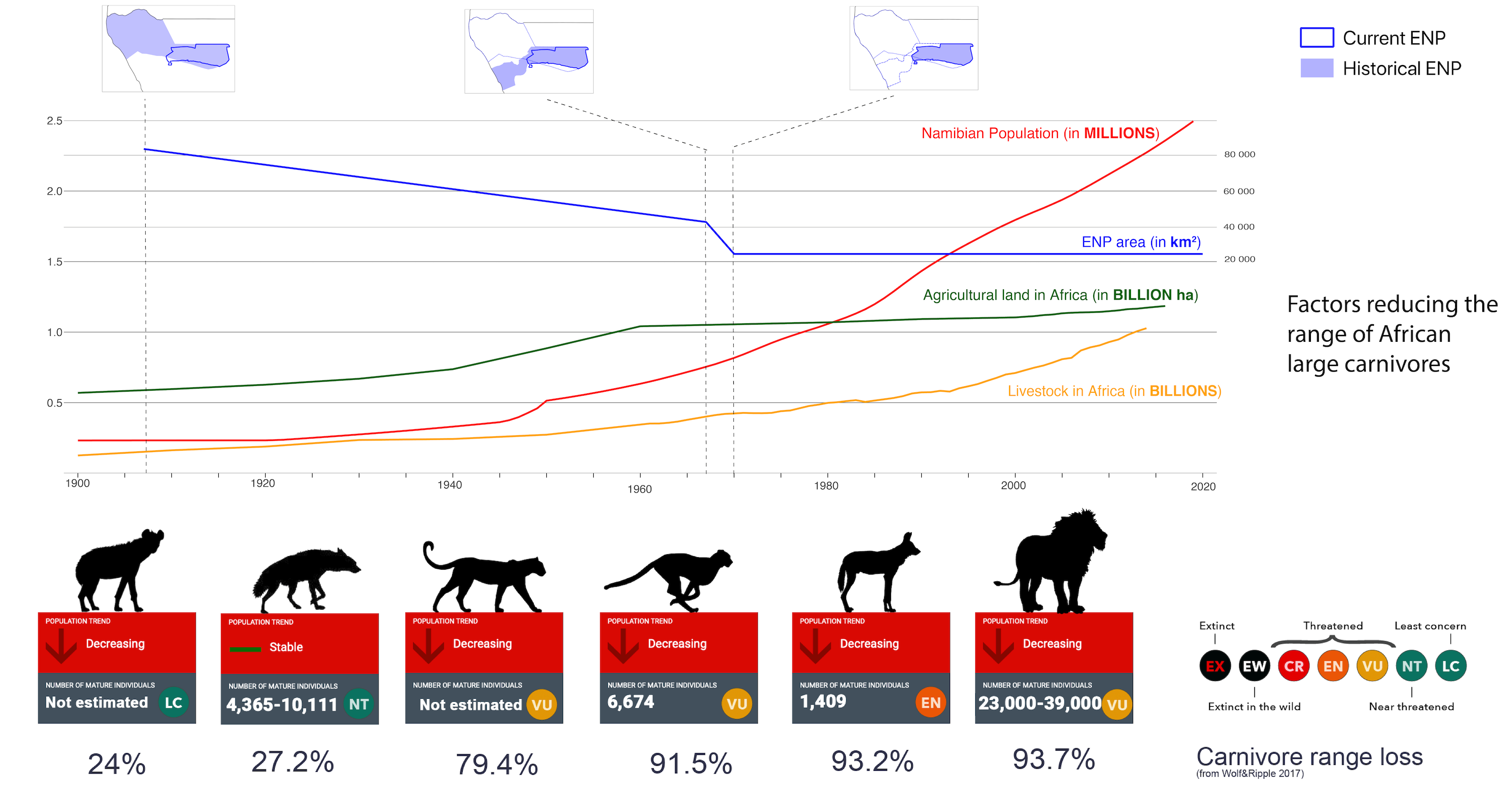
Etosha National Park and the surrounding human-dominated landscape is an intricate, complex system that raises interesting research questions which, if answered, could be applied to other areas in Namibia, across Africa, and globally. The park itself is characterised by a strong rainfall gradient ranging from 300 mm/year in the west to 550 mm/year in the east. While water is available year-round at natural and artificial waterholes, this rainfall gradient creates pronounced differences in vegetation, which leads to differences in wildlife communities, abundance and movement patterns throughout the park. The landscape around Etosha (here defined as being within a 40 km radius of the park boundary) includes towns, communal lands and conservancies, private game reserves, livestock and game farms. We call this area the Greater Etosha Landscape (GEL).
Etosha has been completely fenced since 1973, although parts of the fence were erected as early as 1963. Fences are a common feature of protected areas throughout southern Africa. They limit large-scale animal movements across the landscape beyond Etosha, which has affected animal populations and distributions within the park. However, the numerous holes and breaks in the perimeter fence allow movement of wild and domestic animals between Etosha and neighbouring lands, leading to human-wildlife conflict, particularly when carnivores cross the fence. The human-carnivore relationships in this landscape are especially complicated, as some view carnivores as an opportunity for ecotourism while others see them as a threat to their livelihoods.
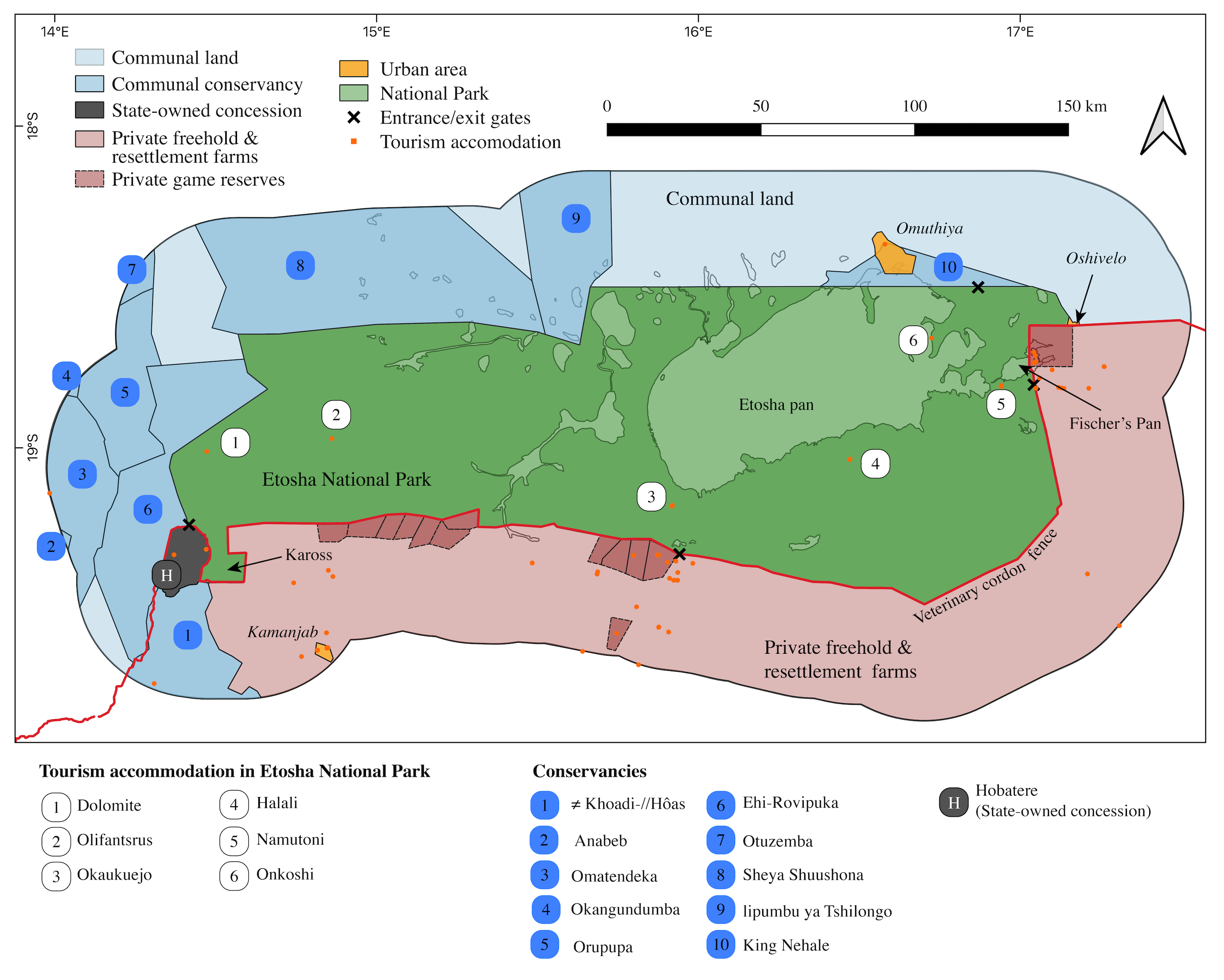
The Greater Etosha Carnivore Programme
The conservation of species and their natural habitats can only be achieved through understanding their ecology and science-based management. Recognising this, the Etosha Ecological Institute and Ongava Research Centre established the Greater Etosha Carnivore Programme (GECP) in 2020 with the overarching goal of identifying and quantifying factors driving carnivore distribution and abundance in the GEL.
The GECP aims to establish a long-term, collaborative partnership of researchers conducting comprehensive social and ecological studies to facilitate the conservation of the entire carnivore guild at the landscape scale. This programme currently includes partners such as the Ministry of Environment, Forestry and Tourism, the University of Georgia (USA), the Leibniz Institute for Zoo and Wildlife Research (Germany), the University of Ljubljana (Slovenia), the Namibia University of Science and Technology, the University of Namibia (UNAM) and the Namibian Lion Trust. Our diverse group hails from multiple scientific disciplines. Where we have exchanged ideas and pooled data and resources to develop a comprehensive, holistic research programme that seeks to match the complexity of our focal landscape and the diversity of its carnivores. For example, some of our projects will focus on particular carnivore species and study their behaviour, genetics, diseases and ecological relationships. Others will concentrate on the complexity of predator-prey relationships in this diverse landscape and on human-carnivore interactions beyond the park boundary, looking for ways to promote coexistence.
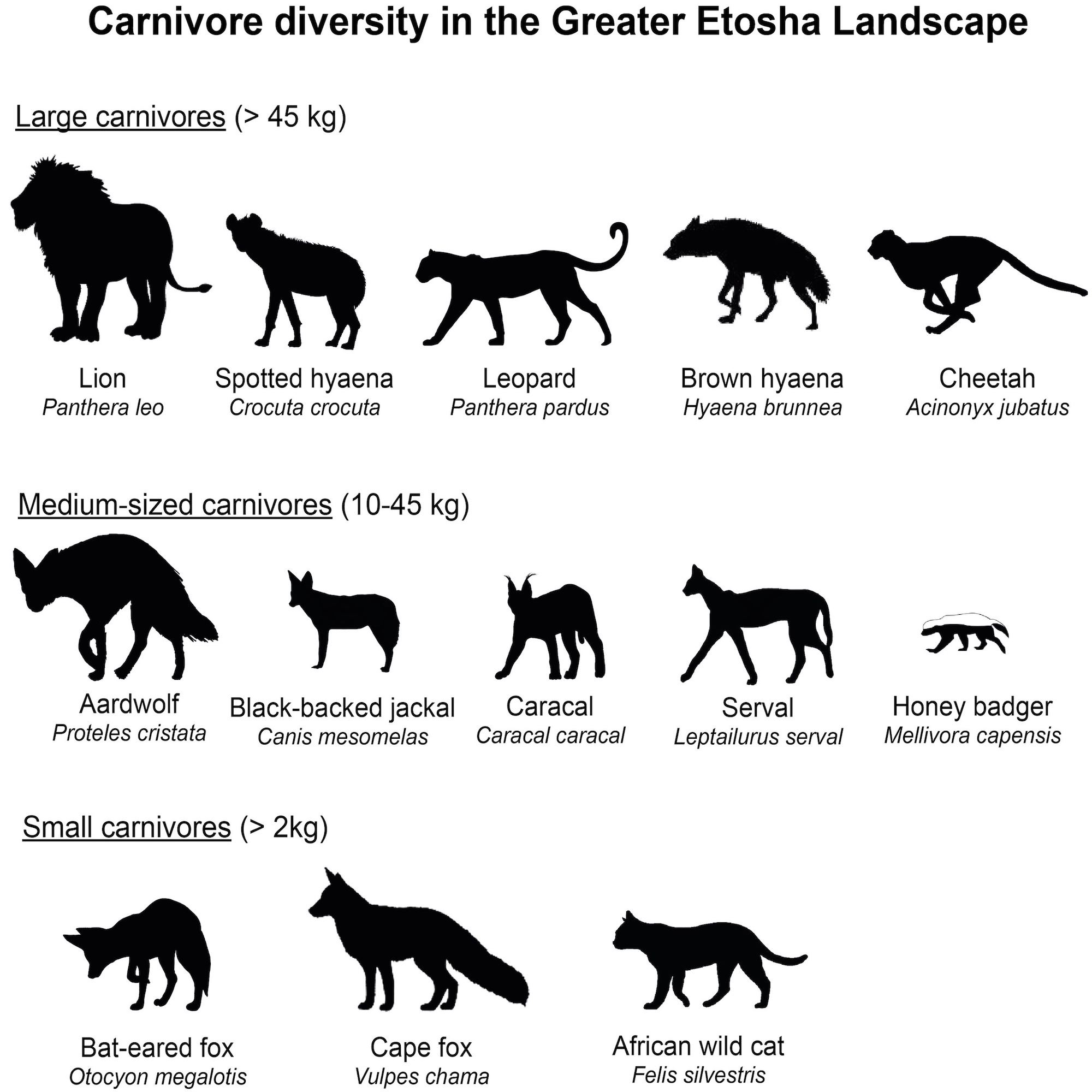

Results from the first two years of GECP
We started our research by collating scientific papers, book chapters and reports on carnivore research conducted in and around Etosha in the past century to find out what was already known and to identify areas that lacked research. We reviewed 139 sources and discovered that most previous research was conducted inside Etosha, on large charismatic species and predominantly focused on single-species ecology. Topics such as genetics, disease, smaller carnivores, what happens when carnivores leave the park, and interactions among carnivore species were largely under-studied.
To start filling in the knowledge gaps revealed by our literature review and synthesis, we began developing and implementing studies on carnivores throughout the GEL. One of the GECP’s first research projects estimated the leopard population at Ongava Game Reserve, a private reserve on Etosha’s southern border. Combining data from GPS collars and camera trap images collected over three years, we found that about a third of the leopards on the reserve were residents with established territories, while the rest appeared to be just moving through (i.e. transient). This raised new questions about the transient part of the population that we seek to answer in coming years.
Another GECP study focused on the fence-crossing behaviour of large carnivores in Etosha. Fences are used worldwide as a management and conservation tool in an attempt to separate wildlife and human activities from each other and thus reduce conflict. However, little is known about the effects of fences on movement behaviour and where and when animals cross them. Using existing GPS data from collars deployed on lions and spotted hyaenas in and around Etosha, our research team found that hyaenas were twice as likely as lions to cross the fence. Spotted hyaenas also moved in a straighter line in the vicinity of the fence, indicating they were heading for known gaps or holes to enter and exit the park. Another observation that was less straightforward to explain was that most lion crossings occurred in the cold-dry season, whilst spotted hyaenas primarily crossed the fence in the wet season. Understanding what drives these movements is key to developing strategies for reducing conflict between humans and these two very different large carnivore species.
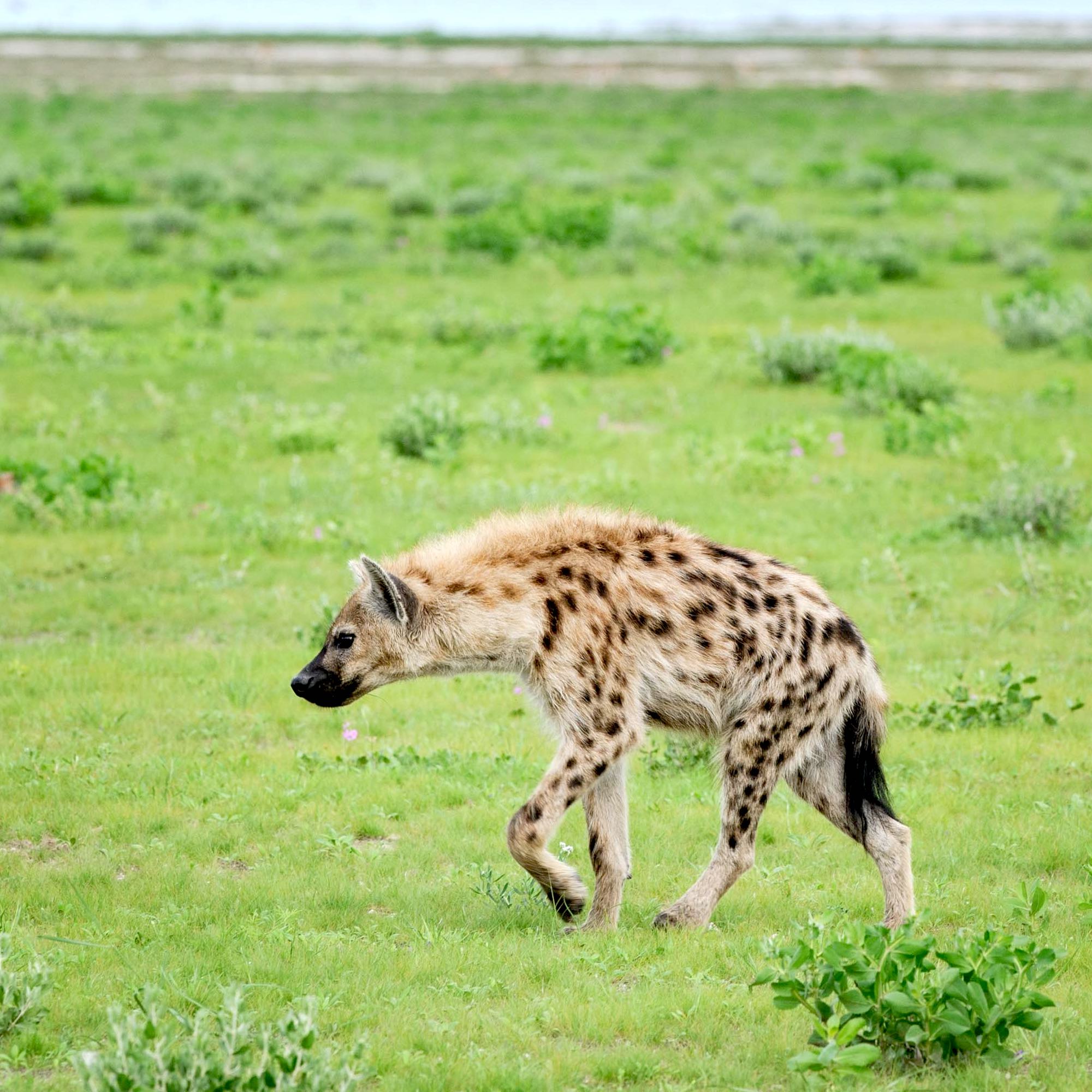
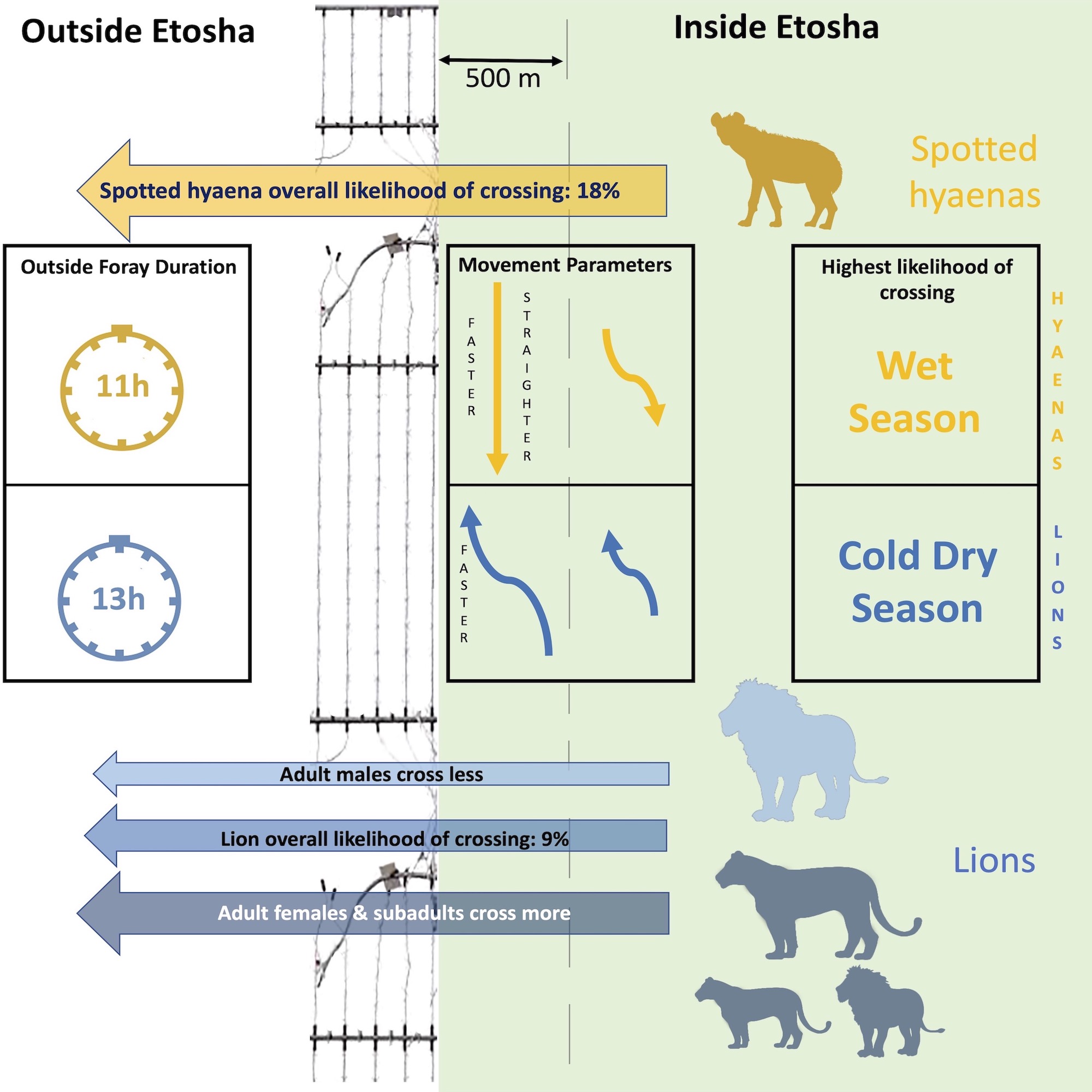
Where are we heading?
These research projects are just the start of our long-term plans for the GECP. We have recently deployed GPS collars on more lions and spotted hyaenas with accelerometers that will measure movement, speed and direction in great detail, and audio loggers to record sounds in the immediate vicinity of the collared animal, including its own vocalisations. Veterinary students from UNAM participated in capturing and immobilising these animals as part of their practical training. The detailed information produced by these collars will help us to understand their spatial and social ecology, communication, interactions within each species and between species, impact of tourism, effects of darting and chemical immobilisation, and human-wildlife conflicts.
To identify factors influencing human-wildlife conflict, we also deployed GPS ear tags on livestock on communal lands and conservancies outside Etosha. However, focusing solely on the animal side of this equation is not enough to understand the full scope of conflict, so we are also conducting interviews with community members outside the park to better understand the socio-economic context in which they live, their local animal husbandry practices and the conflict mitigation measures they use.
Besides using collars we have established multiple extensive remote camera surveys using trail cameras (or camera traps) that trigger when they sense movement or heat changes (i.e. when an animal walks past). The results will provide baseline estimates of prey distribution and abundance in the park, record wildlife interactions with the Etosha fence and reveal aspects of ecology for carnivores that are not intensively monitored using collars.

Other projects focus on carnivore health, using faecal and blood samples from carnivores to study their diets, intestinal microbiome communities and diseases. Finally, we are developing other projects to estimate the population and distribution of both large carnivores and smaller, less-researched species in Etosha. These projects will provide a wealth of information in the coming years that will aid in the conservation and management of carnivores and other wildlife in the GEL.
Our research under the GECP is also providing multiple training opportunities for the next generation of wildlife ecologists through employing Namibian and international students and technicians to conduct research. The students and senior researchers will benefit from the diverse insights and perspectives brought together by this multi-national and multi-disciplinary group. Our research is expanding in scope and scale and will continue for many years, serving as a flagship programme for carnivore conservation and promoting human-carnivore coexistence for generations to come. We hope that our results and findings will be beneficial within the GEL as well as nationally and worldwide. The challenges faced in this landscape are representative of those faced by protected areas and adjacent lands across the globe.
Publications
The research projects conducted during the first two years of the GECP were published in the following scientific journal articles, which are available on the Internet and free to read.
- Weise F. J., J. W. Kilian, S. Periquet. 2021. Of Teeth and Claws: Taking stock of Carnivore Research in the Greater Etosha Landscape. Namibian Journal of the Environment 5:12-24. https://nje.org.na/index.php/nje/article/view/volume5-weise
- Periquet S., S. Crawford, S. Nahalo, S. Stratford, K. Stratford. 2022. At Home or Passing Through? Leopard Population and Spatial Ecology on a Private Game Reserve. Namibian Journal of the Environment 6:78-91. https://nje.org.na/index.php/nje/article/view/volume6-periquet
- Naha D., S. Periquet, J. W. Kilian, C. A. Kupferman, T. Hoth-Hanssen, J. C. Beasley. 2023. Fencing Affects Movement Patterns of Two Large Carnivores in Southern Africa. Frontiers in Ecology and Evolution 11: https://doi.org/10.3389/fevo.2023.1031321.
For articles on similar topics, please click one of the following options:
For more great articles from Conservation Namibia see below...
Conservation Namibia brought to you by:
We use cookies to monitor site usage and to help improve it. See our Privacy Policy for details. By continuing to use the site, you acknowledge acceptance of our policy.


